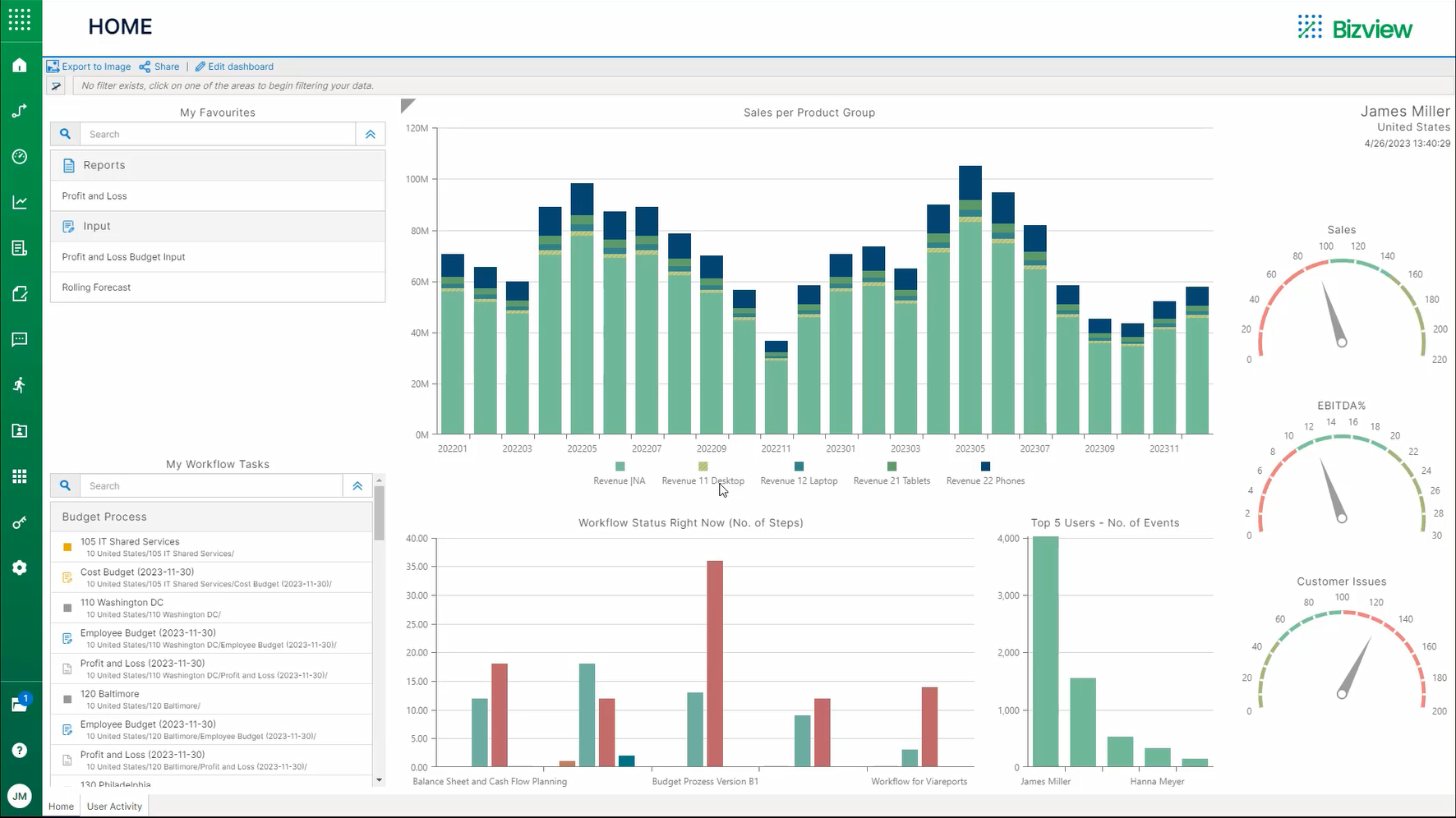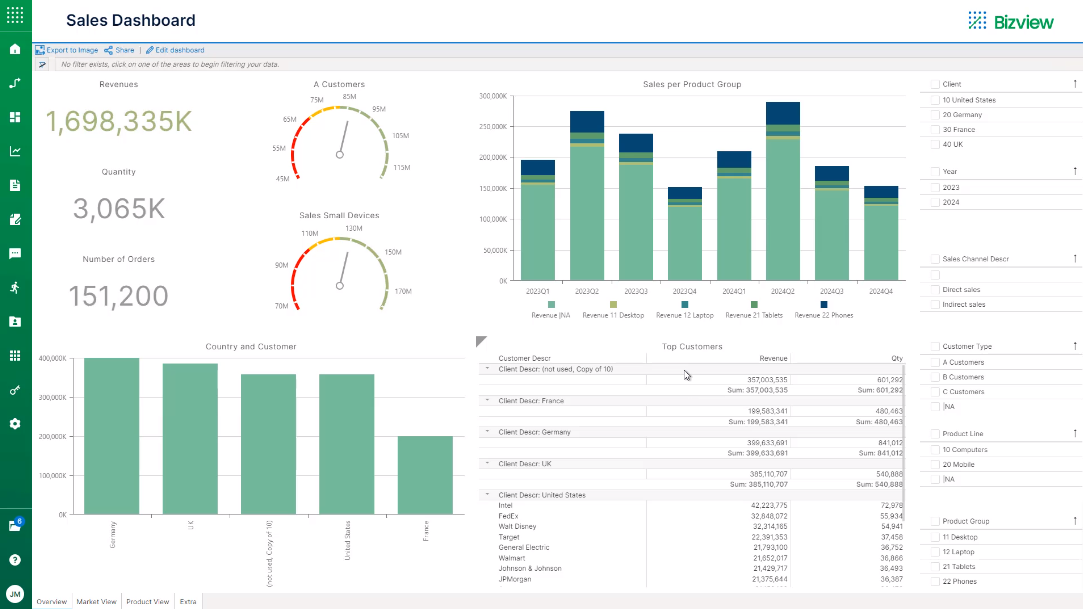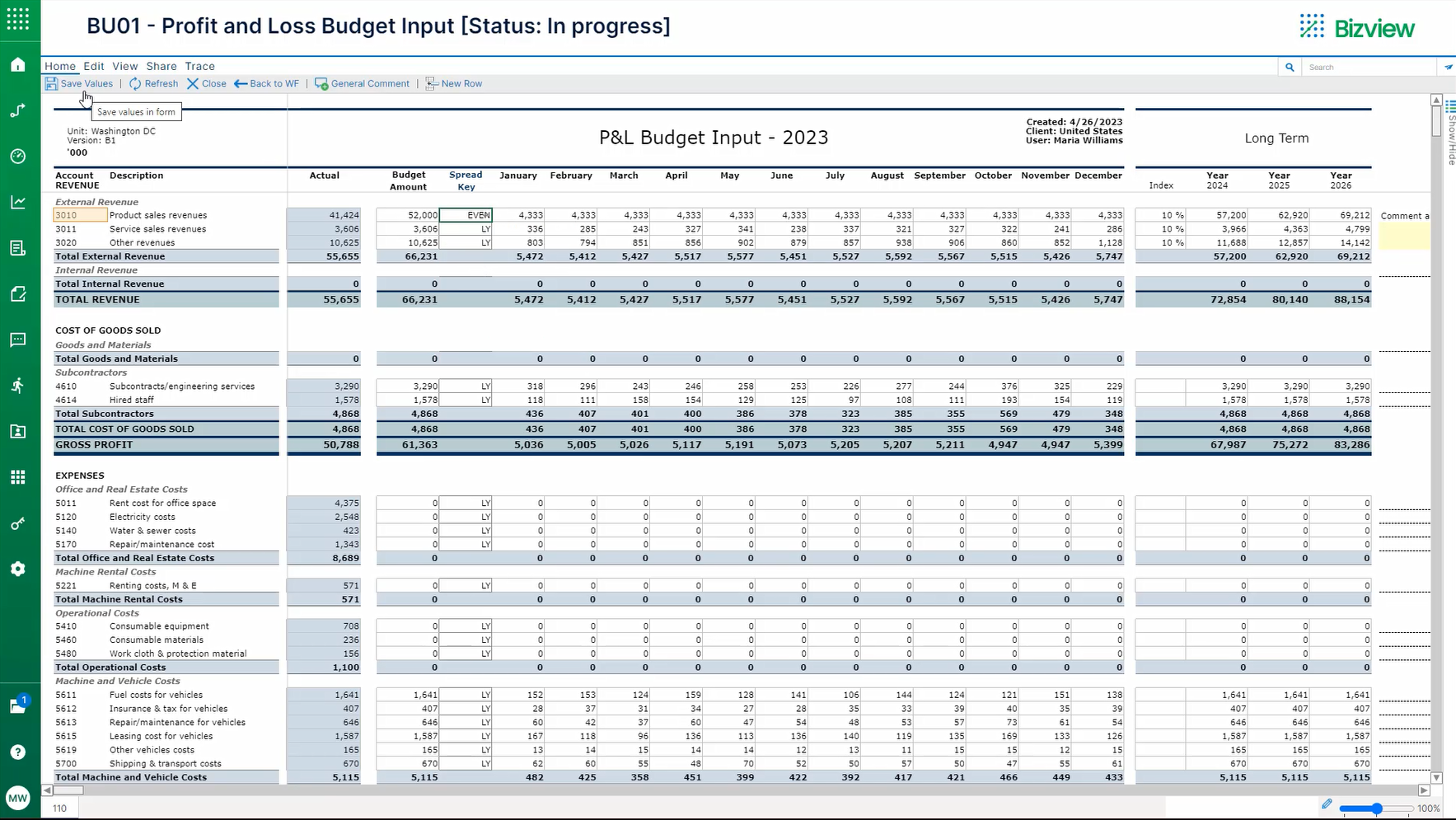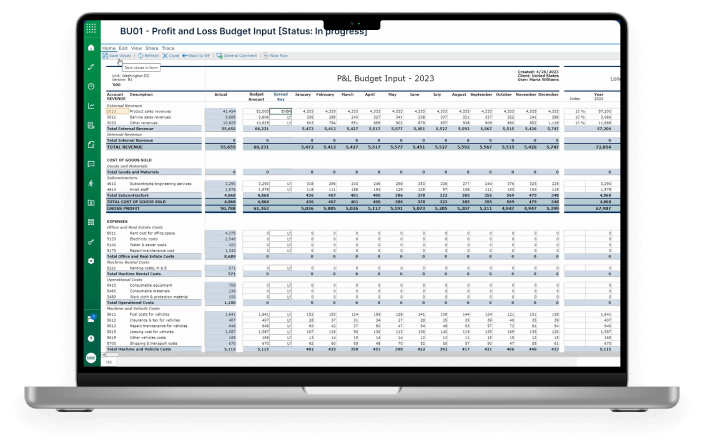
Continuous Planning
Take a modern data-driven approach that aligns strategic and financial planning with business performance. Use technology and collaboration to enable fast, accurate, and frequent decision-making in today’s ever-changing business climate.
Make Your Planning Agile and Responsive
Integrate real-time strategic and financial planning efforts across all aspects of your organization to create a swift, agile, and more data-driven culture.
Real-time data updates
Adjust plans in real-time, so changes in key metrics are immediately reflected in the planning process.
Collaboration Tools
Chat, share, and collaborate to increase stakeholder productivity across the entire planning process.
Scenario Planning Capabilities
Seamlessly evaluate a wide range of scenarios with multiple variables, within your planning process.
Forecasting Tools
Predict future trends and outcomes and drive realistic goal setting based on more informed planning decisions.
Integration with Other Systems
Connect to all your data sources for accurate, up-to-date information, reducing the risk of planning errors or inconsistencies.
Dashboards and Visualizations
Present complex financial information in an approachable way with easy-to-understand data visualizations and dashboards.
Increase Planning Efficiency and Accuracy
Embrace continuous planning and make static annual or bi-annual plans a thing of the past. Save time and resources, improve decision-making, and ultimately increase business productivity and success rates.
Source: 2022 Modern Finance Forum – Future of Planning, Budgeting, Forecasting, and Reporting Global Survey
USE CASES
Continuous Planning in Practice
Learn how you can leverage a continuous planning process within your organization to drive better decision-making, empower your teams, and adapt to economic uncertainty.
Continuous planning is foundational for informed strategic planning and execution. It allows you to make data-driven decisions when forming strategy, and helps you adjust to changes in the market or competitive landscape, ensuring you remain one step ahead and on track meet your strategic goals.
When it comes to risk mitigation, adopting a continuous planning process helps you identify areas of risk across all functions of your business. Continuous planning facilitates frequent reviews of key financial and project data while increasing communication and collaboration. Achieve flexibility and quickly adapt to changing business needs.
Ensuring project goals and business objectives remain aligned is challenging. Continuous planning fosters regular review and updates of project plans, by the right team members, at the right time. Project managers can ensure key activities support business objectives and that projects are on track to deliver expected results.


Create Planning Transparency
Budgeting and Planning can no longer afford to be fragmented and lack transparency. Eliminate siloed planning data and deliver visibility to the right people, at the right time, to drive a smarter decision-making.
Connect with Us
Gain Deeper Insight into Business Performance
Relying on rigid annual or bi-annual planning can severely limit insight into your business’ overall performance. Adopting a continuous planning process provides quicker and more reliable business insights, allowing organizations to adjust quickly and with confidence.
Connect with Us
Increase Planning Speed and Accuracy
In business today, time is of the essence, especially when it comes to data-driven decision making. Automate burdensome manual processes to create efficient, accurate, and timely access to critical and comprehensive business insights.
Connect with UsProducts
Continuous Planning Options to Complement Your Current Systems
Learn how Bizview helps you plan continuously. Bizview is part of insightsoftware’s portfolio of unified, modular applications. By bringing together multiple insightsoftware applications in one place you can address your business needs faster and with less risk, by picking and choosing the capabilities you need across reporting, budgeting and planning, and controllership.

Bizview
Fast, integrated, web-based budgeting, planning and forecasting designed for growing mid-sized businesses needing a scalable solution.
- Shrink planning cycles and improve team productivity
- Support ongoing and continuous planning
- Increase planning transparency and accuracy
- Scale and adapt to your growing business needs
Continuous Planning FAQ
Continuous budgeting and planning is the process of creating and managing a budget that is regularly monitored and revised in response to changes in the business environment. It involves continual evaluation of a company’s financial performance and making budget adjustments based on current conditions and future projections. It also involves continually tracking, analyzing, and predicting the organization’s financial performance and making budget adjustments accordingly. Continuous budgeting and planning helps businesses stay ahead of the curve and make informed decisions in a timely manner.
Unlike traditional planning approaches that involve creating a detailed plan at the beginning of a project or planning cycle and then executing against that plan, continuous planning involves regular review and update of plans throughout the year. This approach allows organizations to be more agile and responsive to changes in project requirements, market conditions, or other factors that may impact project success.
Continuous planning is forward-looking and dynamic, while traditional planning is backward-looking and static. Unlike traditional planning that relies on fixed annual or bi-annual plans that may become outdated or irrelevant, continuous planning allows organizations to adjust their plans based on data and events.
Where traditional planning is siloed and isolated, continuous planning is integrated and interdependent. Continuous planning connects strategic and financial planning with operational and performance management, while traditional planning separates them into distinct processes that may not align or communicate with each other.
Continuous planning is agile and responsive, while traditional planning is rigid and slow. Traditional planning limits organizations to manual tools and labor-intensive activities that may delay or hinder decision-making. Continuous planning enables organizations to make data-driven decisions quickly and confidently.
When implementing continuous planning, organizations face challenges such as limited resources, difficulty in balancing planning and execution, inadequate data or information, or a lack of buy-in from stakeholders. To overcome these obstacles, organizations can leverage technology and tools to streamline planning activities, establish clear guidelines for planning, invest in data analysis tools, and communicate the benefits of continuous planning to stakeholders to build support and alignment.
Continuous planning gives organizations the ability to be agile and responsive to market conditions, customer needs, and competitive pressures. It allows the entire organization to have visibility into the current state of the business and the agility to quickly adjust strategies, plans, and goals as needed. This enables teams to proactively respond to customer and market needs, anticipate potential risks and opportunities, and make informed decisions that help the organization stay competitive and win. Additionally, it ensures that resources are allocated in an efficient manner and that everyone is working towards the same goals.
Rolling forecasts are one technique that can be used as part of a continuous planning process. They allow businesses to keep their plans current and relevant by continuously updating the most recent forecast with new data and information as conditions change. This allows businesses to better anticipate future trends and make strategic decisions based on the most up-to-date information. Rolling forecasts are more flexible and adaptable than traditional budgeting techniques that are based on fixed assumptions and time frames. For example, businesses can use rolling forecasts to analyze current sales trends, adjust production and inventory levels, and adjust pricing and marketing strategies to meet changing customer demands.